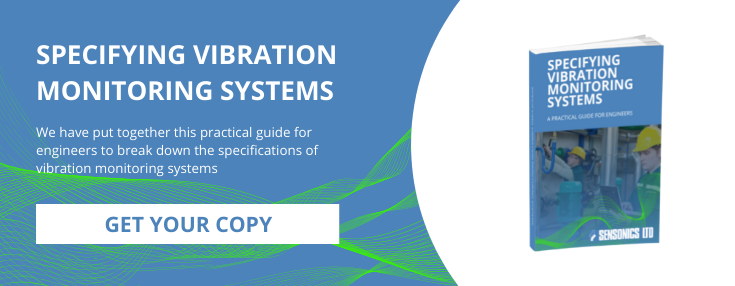Why Seismic Vibration Monitoring Is Essential for Infrastructure Integrity
In the modern era of engineering, safety and resilience are non-negotiable. As infrastructure becomes increasingly complex and critical—from towering skyscrapers to energy-producing mega-facilities—the risks posed by seismic vibrations must be taken seriously. Seismic vibration monitoring is a powerful tool that plays a vital role in ensuring structural integrity, operational safety, and long-term durability. But what exactly is seismic vibration, how does it differ from structural vibration, and why is monitoring it so crucial?
Understanding Seismic Vibration vs. Structural Vibration
Seismic Vibration
Seismic vibration refers to the ground movements generated by natural or artificial seismic events. These events include earthquakes, volcanic activity, blasting, or other geophysical phenomena. Seismic vibrations travel as waves through the Earth's crust, and their impact can be far-reaching—affecting structures miles away from the epicentre.
Structural Vibration
In contrast, structural vibration pertains to the movements or oscillations that occur within a structure itself, often caused by internal activities such as machinery operation, occupant movement, or wind loading. While structural vibrations can be influenced by seismic events, they are usually localised and governed by the building's design, materials, and usage.
In essence:
- Seismic vibration = External, ground-originating movement
- Structural vibration = Internal, building-specific movement
Both types of vibration are critical to monitor—but for different reasons and with different technologies.
How Seismic Vibrations Cause Damage
Seismic events can induce a wide spectrum of effects on infrastructure:
- Foundation Shifting: Sudden lateral or vertical ground movement can lead to foundation settlement or cracking.
- Fatigue and Microfractures: Repetitive or intense vibrations can initiate microcracks in critical load-bearing elements, eventually leading to structural fatigue.
- Liquefaction: In saturated soils, seismic shaking can cause the ground to temporarily lose its solidity, undermining the stability of buildings.
- Resonance Effects: If the frequency of ground motion matches a structure's natural frequency, it can amplify oscillations, sometimes catastrophically (as seen in the 1985 Mexico City earthquake).
The damage may not be immediately visible but can compromise long-term integrity, especially in high-stakes infrastructure.
High-Risk Infrastructure: Why Seismic Monitoring Is Non-Negotiable
1. Nuclear Power Plants
These facilities demand the highest levels of safety and redundancy. Seismic monitoring is essential to:
- Automatically trigger shutdowns during strong ground motion
- Ensure containment structures are uncompromised
- Provide data for post-event inspection and regulatory compliance
2. Nuclear Processing Plants
Even without power generation, facilities handling radioactive materials are vulnerable. Seismic monitoring helps protect:
- Storage tanks
- Containment vessels
- Waste treatment systems
3. LNG (Liquefied Natural Gas) Plants
LNG plants involve highly flammable materials under extreme pressure and temperature. Seismic sensors allow:
- Real-time detection of potential structural compromise
- Isolation of systems during ground movement
- Prevention of leaks and fires
4. Hydropower Dams
These massive structures not only support energy needs but also regulate water flow and flood prevention. Seismic events can:
- Cause dam wall cracking
- Alter reservoir dynamics
- Trigger landslides or overtopping
Monitoring helps in initiating pre-emptive drainage or load adjustments to avoid catastrophic failure.
5. Skyscrapers
Tall buildings, especially in seismic zones, are designed with damping systems and flexible cores. Seismic sensors:
- Guide emergency response
- Provide structural health data
- Verify building performance post-event
Benefits of Seismic Vibration Monitoring
- Early Warning: Systems can detect preliminary seismic waves (P-waves), offering seconds to minutes of response time before damaging S-waves arrive.
- Automated Response: Critical systems can shut down or go into safe modes instantly.
- Structural Health Tracking: Long-term vibration data helps engineers evaluate wear and fatigue.
- Regulatory Compliance: In many regions, seismic monitoring is a requirement for operational permits.
- Insurance and Liability: Data can support claims or legal defences in the aftermath of seismic events.
Final Thoughts
The importance of seismic vibration monitoring extends far beyond earthquake zones—it's a foundational component of resilient design and responsible facility management. Whether it’s a nuclear facility, LNG plant, dam, or skyscraper, understanding and responding to the Earth’s movements is not a luxury—it's a necessity.
As climate patterns shift and human development expands into risk-prone regions, proactive seismic monitoring will only grow more essential in protecting infrastructure, lives, and the environment.
If you’d like to learn more, download our free guide, Specifying Seismic Monitoring and Protection Systems: A Practical Guide, here or get in touch with us today.



